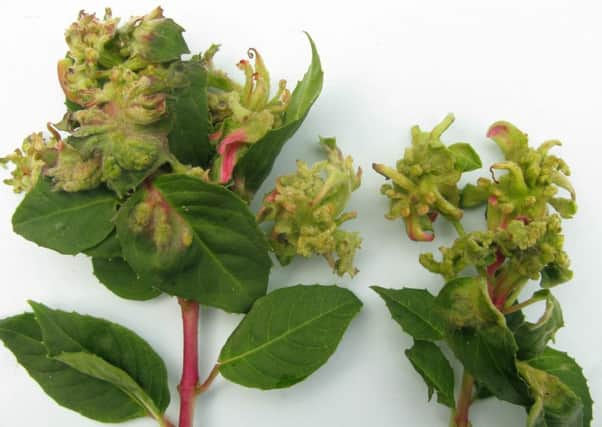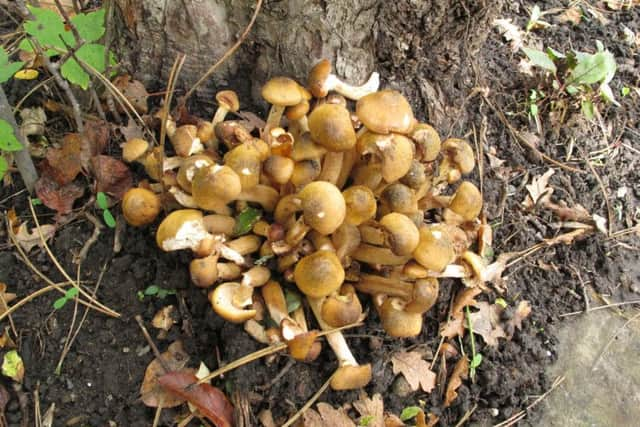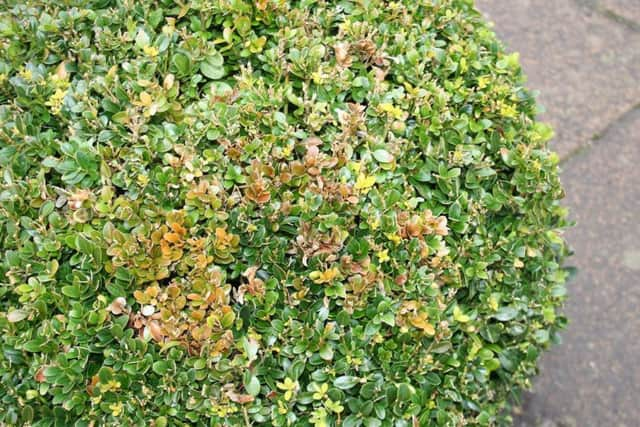The top 10 diseases and pests in the garden in 2017


Now in its 22nd year, the society’s annual ranking numbers are based on gardeners’ queries to the charity’s experts.
However, I feel this is possibly skewed in favour of the south – I’d love to see separate results based on the North of England.


Advertisement
Hide AdAdvertisement
Hide AdIn 2017, box tree caterpillar returned to the number one spot after dropping to number seven in 2016. It’s common in London and the Home Counties.
Box also had to suffer box blight and volutella blight.
New in this time are kerria twig and leaf blight.
Honey fungus has retained the disease top spot which it has held since the statistics were first published.


The RHS research aims to help gardeners manage the disease that attacks and kills the roots of perennial plants before going on to decay the wood.
Pests and diseases to watch this year include fuchsia gall mite which makes its fourth and highest appearance in the top ten since its discovery in the UK in 2007.
Advertisement
Hide AdAdvertisement
Hide AdMites have now reached South Wales and Cheshire, which cause the shoots and flowers of fuchsias to distort.
Changing weather conditions, the withdrawal of fungicides and the use of highly susceptible cultivars, is expected to see a rise in the number of diseases of edible crops such as apple and pear scab and pear rust.


Gerard Clover, RHS head of plant health, said: “This year’s pest and disease ranking points to the continuing problems inflicted on gardens by old foes like honey fungus but also new and emerging threats like box tree caterpillar, fuchsia gall mite and kerria twig and leaf blight.
“With new pests and diseases emerging in continental Europe, it has never been more important that people get to grips with what is going on in their gardens.”
GET IN TOUCH
Advertisement
Hide AdAdvertisement
Hide Adl For more information, plus cook what you grow, recipes, environmental news and more, log on to the website at www.mandycanudigit.com – which is also now smartphone friendly.


You can also follow Mandy on Twitter @MandyCanUDigIt or you can like me on my Facebook page at Mandycanudigit
JOBS TO DO THIS WEEKEND
Daffodils (like everything else) are late, so keep nipping off the dead flower heads and let the foliage die down naturally.
If you’re seduced by ready-planted hanging basketsat the garden centre, make sure they’re properly hardened off – same with trays of annuals and veg.
Advertisement
Hide AdAdvertisement
Hide AdCover emerging shoots of potatoes with soil. If the tubers are exposed to light, they turn green because of an increase in chlorophyll, which makes them have a high level of glycoalkaloids toxins.
In the veg garden, sow quick-growing crops, such as salads, between longer-term residents, such as brassicas, while they’re establishing.
Mulching fruit crops will help them to retain moisture around the roots so you will use less water.
Take softwood cuttings of deciduous shrubs, including Forsythia, Fuchsia, Hydrangea macrophylla, Philadelphus and Spiraea – choose non-flowering stems.
Collect rainwater in barrels.
Advertisement
Hide AdAdvertisement
Hide AdFor roses, remove weeds and check for signs of black-spot, aphids and leaf-rolling sawfly damage, treat if required.
Trim winter-flowering heathers with shears.
After flowering, dig up and divide Primulas.
Tall-growing plants such as Delphinium, Lupin and monkshood need a framework of canes and string around then to help prevent them being damaged by winds. Do this now so the supports become unobtrusive as the plants grow through them.
Give shrubs, trees, and borders a mulch of compost, to preserve water and smother any weed seedlings.